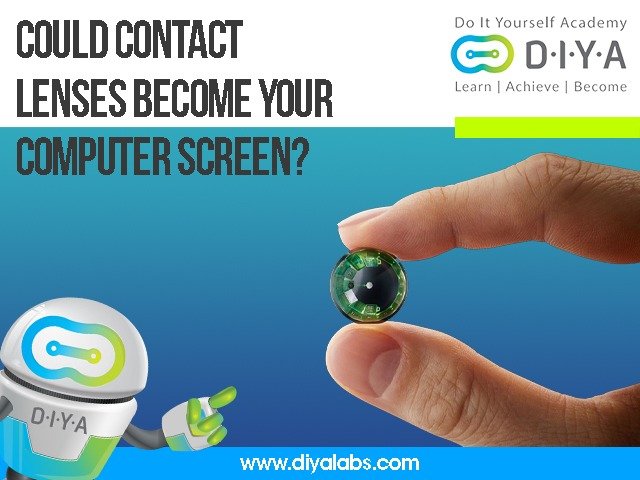The smart lens of the future is here.

Could Contact Lenses Become Your Computer Screen?
The smart lens of the future is here.
Something like this would have only been seen in movies, but how incredible is it to realize that it is now a reality? Assume you're preparing to give a speech and, instead of glancing down at your notes on the podium, you can see them right in front of you. It sounds too wonderful to be true, yet it is already a reality.
A smart lens with a small microLED display that allows you to read floating text.
This is only one of the numerous aspects of the next generation of contact lenses that are about to make their debut around the globe. "Imagine... you're a musician with your lyrics, or your chords, in front of your eyes. Or you're an athlete and you have your biometrics and your distance and other information that you need, " says Steve Sinclair, from Mojo, which is developing smart contact lenses.
The company is now testing smart contact lenses on people to see how effective such capabilities can be put into the lens. This allows the wearer to see text floating in front of their eyes. This is the period of scleral lenses that not only suit the eyeballs but also extend to the whites of the eyes. It has a small microLED display, solid-state batteries, and intelligent sensors. Speaking of this, Mr. Sinclair says, “We've built what we call a feature-complete prototype that actually works and can be worn—we're soon going to be testing that [out] internally.”
What else is being developed under the Smart Lens section?
Lenses may self-monitor and offer information about one's health. It can also monitor ocular pressure and glucose levels. This is a significant breakthrough in the knowledge of diabetes in people. It's both startling and exciting to see how far technology has progressed. Companies like these are assisting in the development of items like these, which aid in the better monitoring of patients and, as a result, deliver better healthcare. Many online studies are also aiming to build glasses that can heal eye disorders, assist in monitoring diabetic levels, or even find an internal treatment for cancer by analyzing particular indicators such as cancer-related chemicals, light intensity, and so on.
Another breakthrough was made by the University of Surrey, which created a lens with a light detector for receiving optical information, a temperature sensor for identifying probable corneal illness, and a glucose sensor for monitoring glucose levels in tear fluid.
The challenges in making smart lenses:
One important problem in producing these lenses is incorporating the smallest battery possible to keep the lens operational. The real question is whether such a small battery will provide enough power to power the lens. Another issue is one of privacy. Smart glasses, at the very least, hint at the gadget being used to scan or photograph objects surrounding the wearer. When it comes to contact lenses, it's nearly impossible to keep track of this. Aside from privacy, there is also the issue of data security. Something this close to your actual body might give far more information than you want.
"My worry is that devices like AR (augmented reality) glasses, or smart contact lenses, will be seen as a potential trove of intimate data,” says the spokesperson of Mojo. While technology breakthroughs are pushing limits and discovering new and innovative solutions to many challenges, it is equally vital to examine the limitations of these innovations in order to give a safe and inclusive answer.